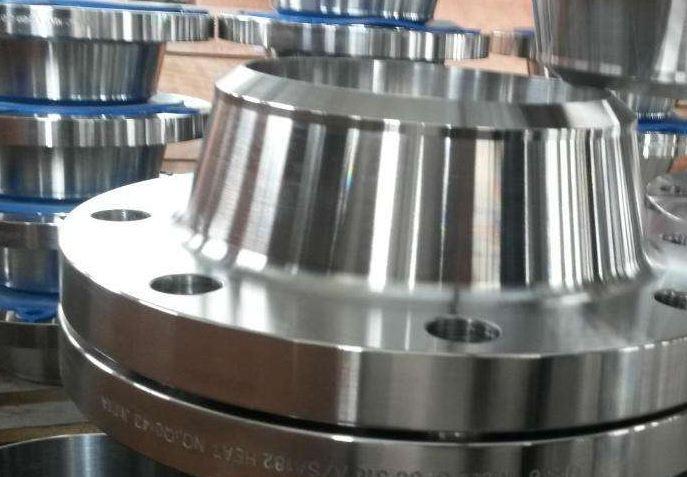Flanges are integral components in many industrial piping and machinery systems. As China flange manufacturers continue to innovate flange designs and materials, understanding the advantages and disadvantages of different flange types and configurations is key for operations and maintenance personnel when selecting flanges for specific applications.
This article provides a detailed look at key benefits and drawbacks of common flange types and materials to consider when choosing flanges from Chinese flange suppliers and manufacturers.

Key Advantages of Using Flanges
There are several notable benefits that make flanges a ubiquitous choice across industrial pipe networks and machinery:
- Assembly and Disassembly: Flanges allow for easier assembly and disassembly of piping segments and machinery components compared to welded joints. This supports maintenance, inspection, cleaning, and part replacements.
- Flexibility: Flanged joints allow for more flexibility in pipe routing compared to welded joints. Pipes can be oriented at angles to accommodate space constraints.
- Isolation: Installing flanged joints at strategic points enables the isolation of pipe segments for maintenance, rerouting, or control of flow. Valves and other components can also be isolated.
- Mixing Materials: ASME/ANSI B16.5 Flanges allow connecting pipe segments and components made of dissimilar metals or materials that may be difficult to weld together.
- Pressure Retention: Properly designed flange joints can retain high pressures, a key requirement for steam, hydraulic, and many chemical systems.
- Repairs: Damaged flanges are easier to replace compared to cutting out and welding in new pipe sections.
- Standardization: Flanges are produced in standardized dimensions, allowing interchangeability between flange suppliers. This simplifies maintenance and repairs.
- Strength: High-strength flanges are available for high-pressure and load applications.
Potential Drawbacks of Flanges
While flanges have many benefits, there are some potential disadvantages to consider as well:
- Higher Initial Cost: Flanged joints may have a higher initial installation cost compared to welded pipe. The flanges themselves, gaskets, and fasteners all add to material costs.
- Space: Flanges occupy radial space around the pipe diameter that may not be available in compact machinery or pipe runs.
- Leakage: Flange joints rely on gaskets for sealing, which can develop leaks over time due to gasket failure, bolt loosening, or misaligned flanges.
- Maintenance: Flange joints require periodic inspection and maintenance to check for leaks and proper bolt torque.
- Pressure Limitations: While high-strength flanges are available, flanged joints still have lower pressure limits than welded pipes. This makes them unsuitable for some very high-pressure applications.
- Corrosion: Exposed flange joint components like bolts and gaskets can be affected by corrosion, requiring periodic replacement.
- Repetitive Stresses: In applications with repetitive thermal or vibrational stresses, flange bolts can gradually loosen over operating cycles.
Key Flange Materials and Their Pros and Cons
In addition to design, the material that flanges are fabricated from impacts performance properties. Here are some key advantages and disadvantages of common flange materials to factor into material selection:
Stainless Steel Flanges
Pros:
- Excellent corrosion resistance for a wide range of media
- High strength and durability
- Withstand high pressures and temperatures
- Good wear resistance
Cons:
- Higher cost than carbon steel
- Lower strength than alloy steel
- Susceptible to chloride Stress Corrosion Cracking (SCC)
Carbon Steel Flanges
Pros:
- Lowest cost option
- Readily available
- Good mechanical properties
Cons:
- Prone to corrosion
- Not suitable for high temperatures
- Lower strength than alloy steels
Alloy Steel Flanges
Pros:
- High strength and toughness
- Withstand high pressures and loads
- Good corrosion resistance with proper alloys
Cons:
- More expensive than carbon steel
- Heavier than other materials
Nickel Alloy Flanges
Pros:
- Excellent corrosion resistance
- Perform well in high temperatures and pressures
- Withstand thermal cycling and fatigue
Cons:
- Very high cost
- Difficult to machine and fabricate
Non-Metallic Flanges
Pros:
- Lightweight
- Resistant to corrosion and chemicals
- Electrically and thermally insulating
Cons:
- Lower strength and pressure ratings
- Can degrade over time
- Not suitable for high temperatures
Key Takeaways on Selecting Flanges
There are many factors to consider when selecting flanges for industrial piping and equipment applications. Understanding the core benefits and limitations of flanges, along with the tradeoffs of different materials, is key to choosing optimal flange configurations. When sourcing flanges from flanger suppliers in China, be sure to evaluate manufacturers' quality control, testing and compliance with international standards to ensure performance requirements are met. With attention to these considerations, operations and maintenance teams can take full advantage of the flexibility and convenience of flanged connections throughout their facilities.
